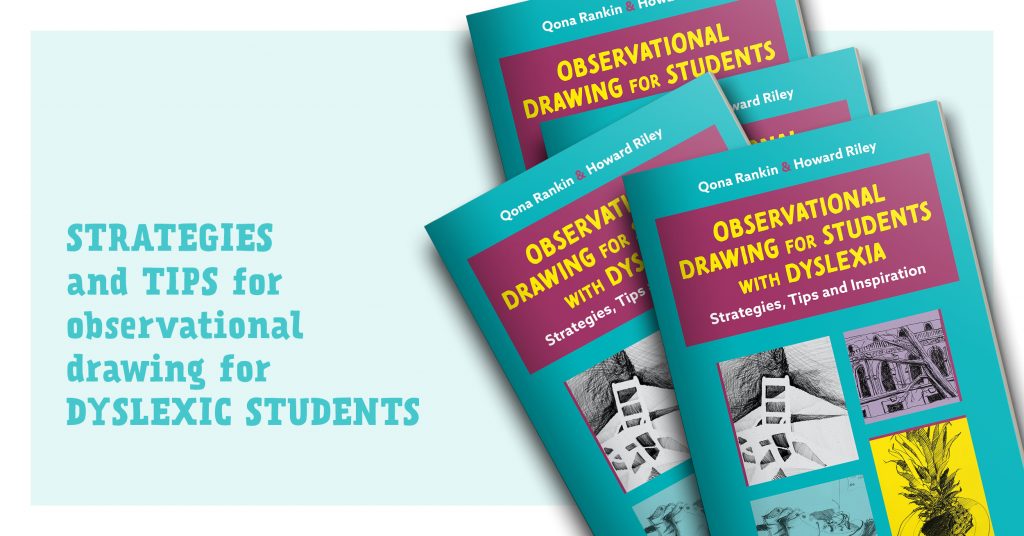
Observational Drawing for Students with Dyslexia by Qona Rankin and Howard Riley offers practical advice to dyslexics who wish to improve their observational drawing, either for the purpose of augmenting school and college portfolios, or for those who simply want to draw better. Ideal for home-schooling, the strategies offered have been tested in workshops at the Swansea College of Art, Wales, the Royal College of Art, London, and found to be successful not only with dyslexic students but also those who aren’t.
Authors Qona Rankin and Howard Riley say when we look at the world we see through the language that labels it. This book shows you how to let language go, and to see the world as pattern, without words.
All we actually see are surfaces and edges, with their textures, tones and patterns normally interpreted as objects and the spaces in between. With the help of their students, Qona and Howard have worked out 5 pointers to remember, which will help you to improve your observational drawing:
1 Format frames the topic and focusses attention:
2 Scaffolding ties together salient points in the composition and establishes proportional relationships:
3 Negative Spaces are treated as essential components in the jigsaw of the overall pattern of shapes:
4 ‘T’ and ‘Y’ Junctions occur where we see two surfaces overlapping a third:
5 Contrast Boundaries or edges, where one tone or texture meets another:
Using the 5 pointers helps us see the world afresh, making the familiar strange, visually intriguing, and does wonders for a student’s confidence!









